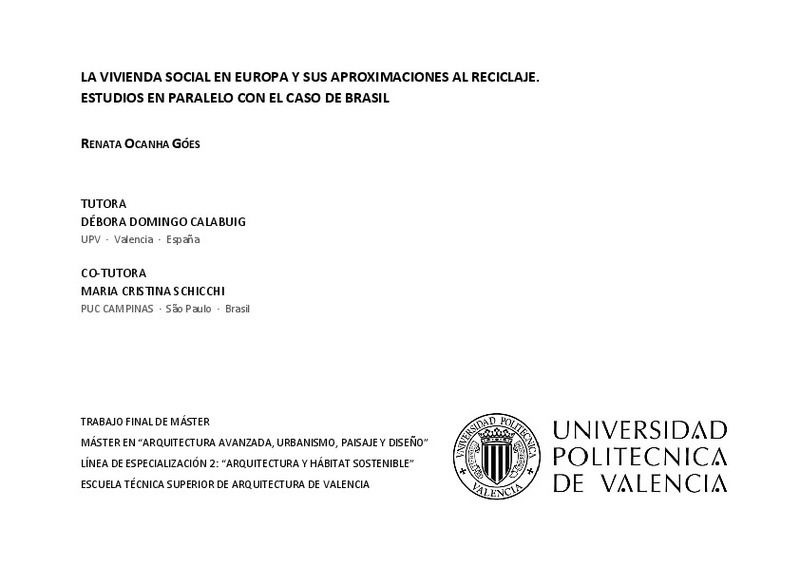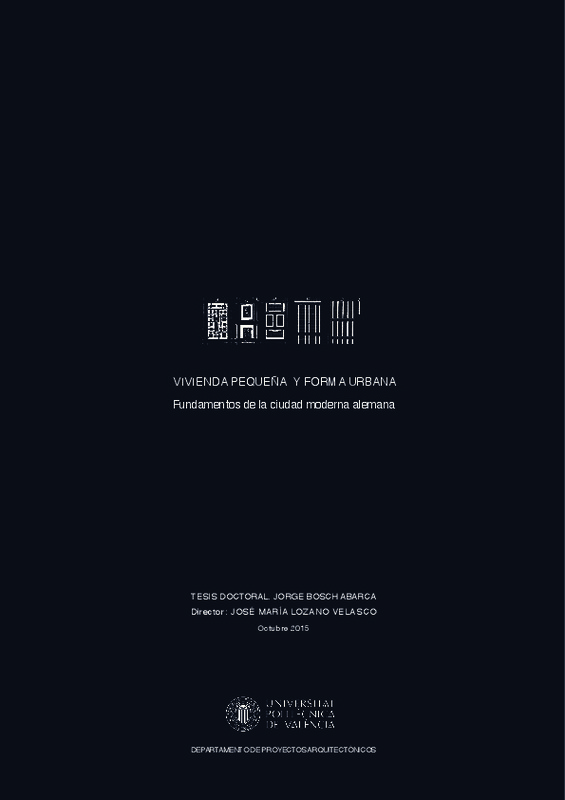|
Resumen:
|
[ES] Este trabajo se centra en el caso particular de las viviendas llamadas tiny houses en su definición y variantes, específicamente en su aplicación como refugio en el paisaje. Se busca recoger los conceptos de diseño ...[+]
[ES] Este trabajo se centra en el caso particular de las viviendas llamadas tiny houses en su definición y variantes, específicamente en su aplicación como refugio en el paisaje. Se busca recoger los conceptos de diseño posibles que puedan conducir a que las tiny houses, bajo esta modalidad de refugio, sean espacios habitables y confortables, en contextos habitualmente no urbanos.
Siguiendo un proceso de exploración y comparación se revisará la historia y características de lo que es en si este tipo de viviendas, recogiendo la información que ayude a entender el surgimiento de este movimiento, su problemática, su modo de desarrollarse en la sociedad actual y sus propias condiciones en relación con otros tipos de vivienda.
Será necesario emplear referentes, indagar en el lenguaje propio de estas construcciones y en particular en las tiny houses vinculadas a implantaciones singulares en paisaje, muchas veces temporales, y sus buenas prácticas a la hora de implantarse. Se busca realizar un estudio donde se vinculen distintas tiny houses en diversos ecosistemas, climas y condiciones, extrayendo un pequeño abanico de distintas aproximaciones que permitan dar indicios de posibles aplicaciones posteriores.
[-]
[EN] This work focuses on the particular case of tiny houses in their definition and variants, specifically in their application as a refuge in the landscape. The aim is to collect possible design concepts that can lead ...[+]
[EN] This work focuses on the particular case of tiny houses in their definition and variants, specifically in their application as a refuge in the landscape. The aim is to collect possible design concepts that can lead to tiny houses, under this form of shelter, being habitable and comfortable spaces, in contexts usually not urban. Following a process of exploration and comparison, the history and characteristics of what this type of housing is, collecting information that will help to understand the emergence of this movement, its problems, its way of developing in present-day society and its own conditions in relation to other types of housing. It will be necessary to use references, to investigate the language of these constructions and in particular the tiny houses linked to singular settlements in landscape, often temporary, and their good practices when they are implemented. The aim is to carry out a study linking different tiny houses in different ecosystems, climates and conditions, extracting a small range of different approaches that will give indications of possible subsequent applications.
[-]
|










